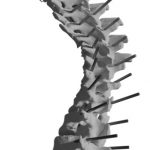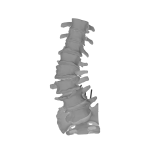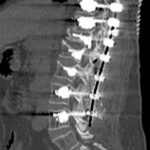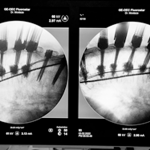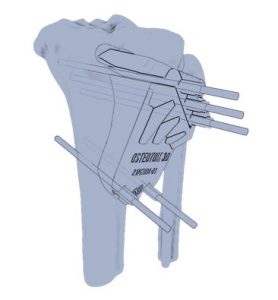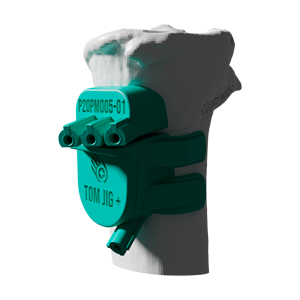Dr. Antonio Luis Mostaza Saavedra
Complejo Asistencial Universitario de León
58 year old woman, with spinal pain, cramps, tiredness and decreased leg strength
Kyphosis
Spinal decompression, arthrodesis andT10-L4 cemented instrumentation
TOR JIG ® S: Anatomical biomodel and 7 personalized surgical guides.
Lumbar degenerative disease is a term used by physicians to
describe the natural degeneration of the lumbar spine overtime.
It includes conditions such as spondylosis (degeneration of the
spinal discs as in osteoarthritis), spinal stenosis (narrowing of the
spinal canal and the openings through which nerve roots exit)
and spondylolisthesis (forward sliding of the vertebrae).
In those cases where surgery is required, the use of TOR JIG® S system
enables an easy and fast pedicle screws placement.
Surgical planning
- Screws position and orientation are marked according to the surgeon´s prescription.
- 3D anatomical model is made.
- Personalized surgical guides are designed for each case. Finally, the biomodel and the guides are manufactured via 3D printing
Surgical process
During the intervention, the guides were of great help as thepedicles were extremely narrow.
Thus, screws of the samecross-section as the pedicles had to be placed. During surgery, the biomodel was consulted to assess whichvertebral decompression to perform, taking measurements on it.
It was also possible to check the positioning of the screws in thepedicle, even placing the screws on the pedicle, to see whetheror not it would fracture with a certain type of drill bit.
Performance
The biomodel helps to understand the patient’s osteodegenerative pathology and to approach surgerywith the three-dimensional anatomy learned.
The use of the hands-free technique for this type of casereduces the probability of success in the intervention, as it is easy to exceed the limits of the pedicle.
The surgery generated results such as the disappearance of pain, improvement of strength in the lowerextremities and improvement of the kyphosis.
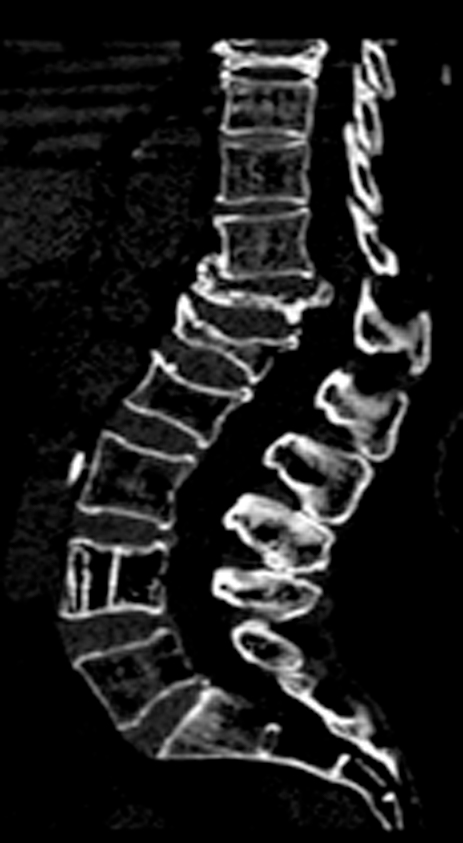
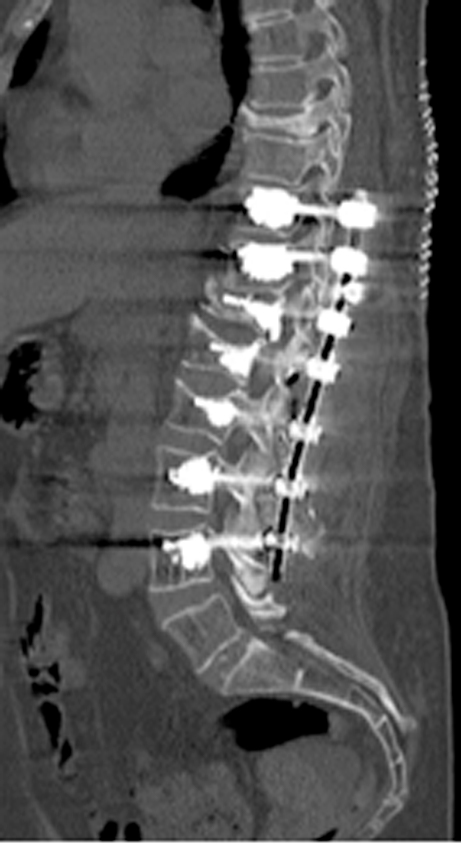
DOWNLOAD OUTSTANDING CASE

Click on the button to download the full outstanding case in PDF format.

